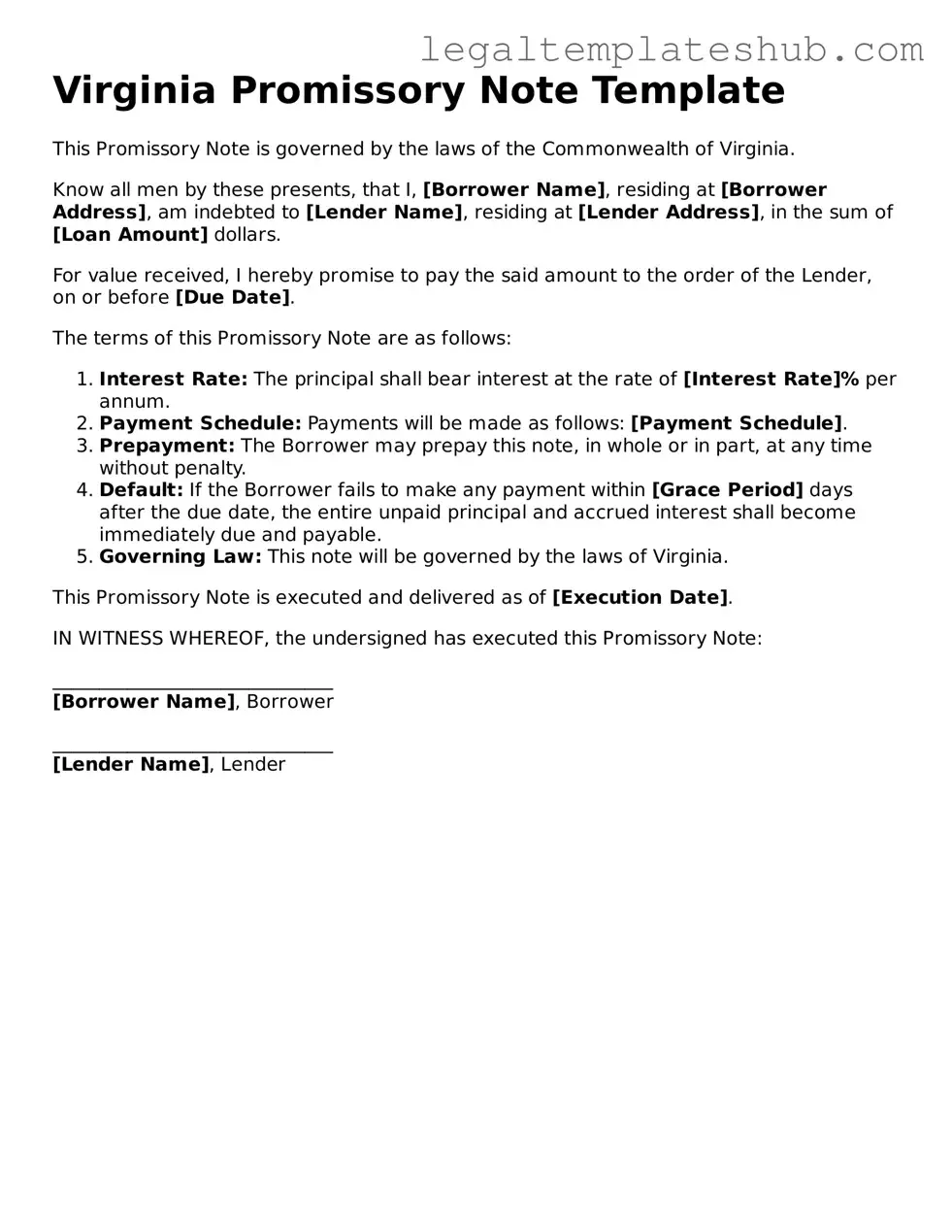Printable Promissory Note Document for Virginia
A Virginia Promissory Note is a legal document that outlines a borrower's promise to repay a loan to a lender, detailing the amount borrowed, interest rate, and repayment terms. This form serves as a crucial tool for both parties, ensuring clarity and security in the lending process. If you're ready to take the next step, fill out the form by clicking the button below.
Access Editor
